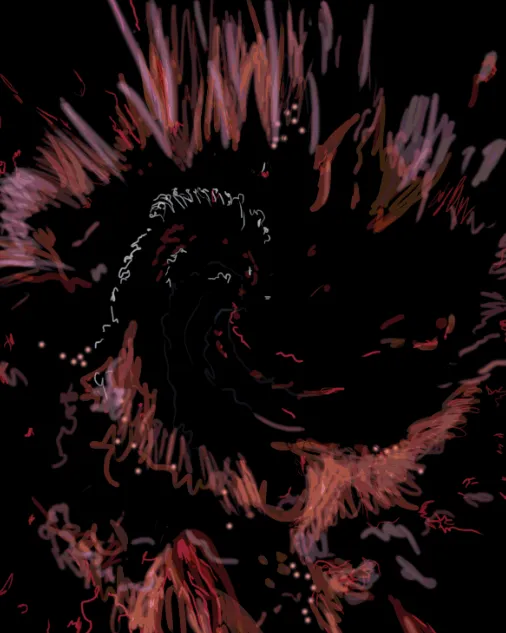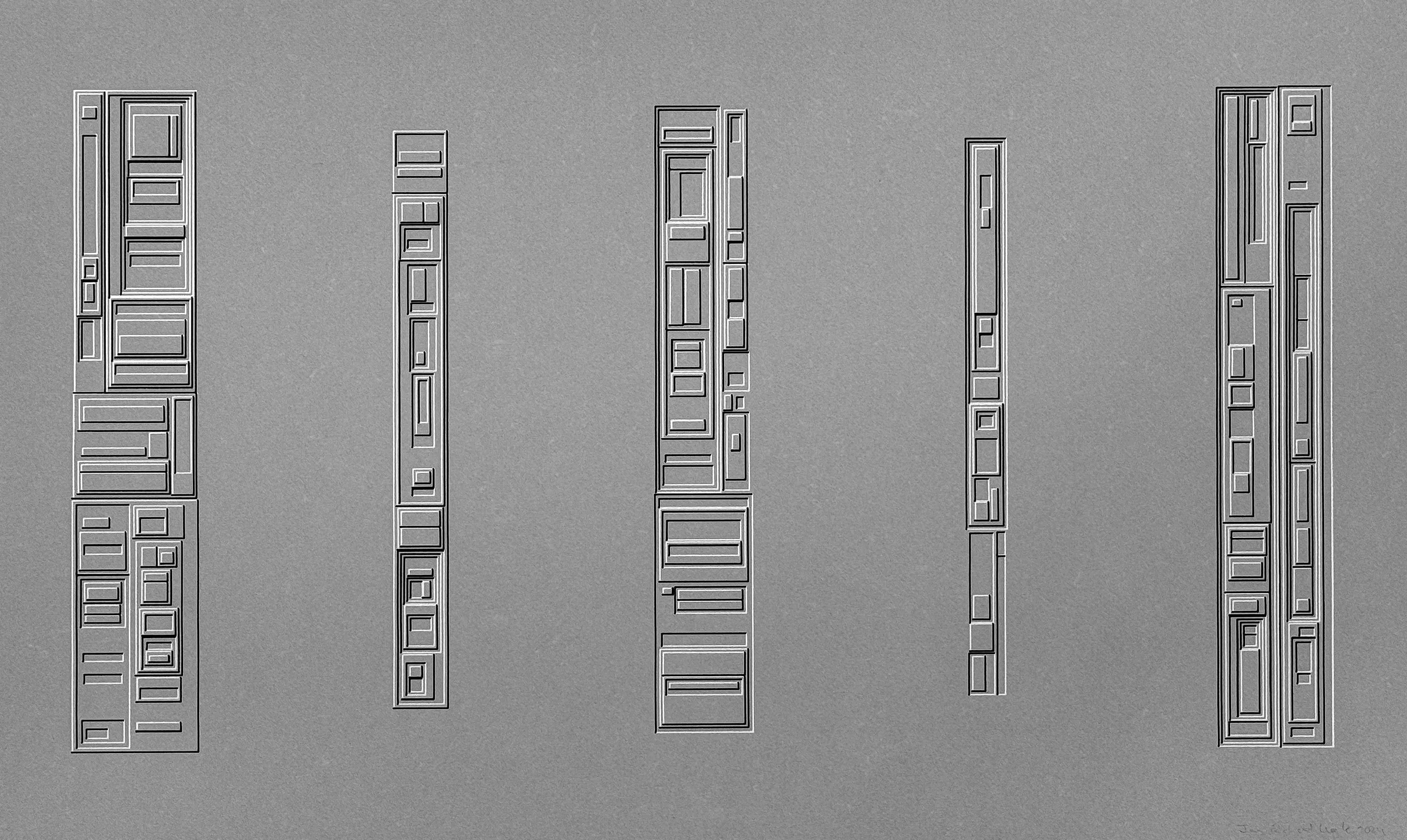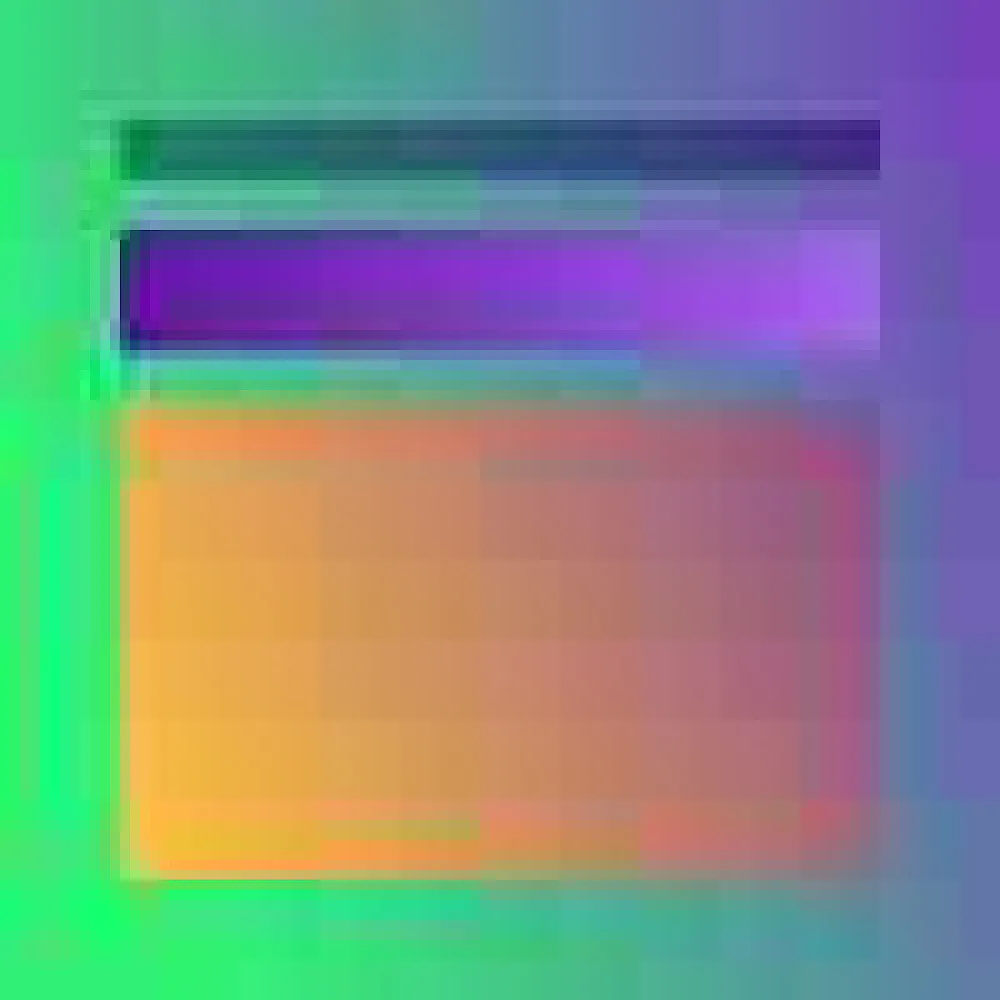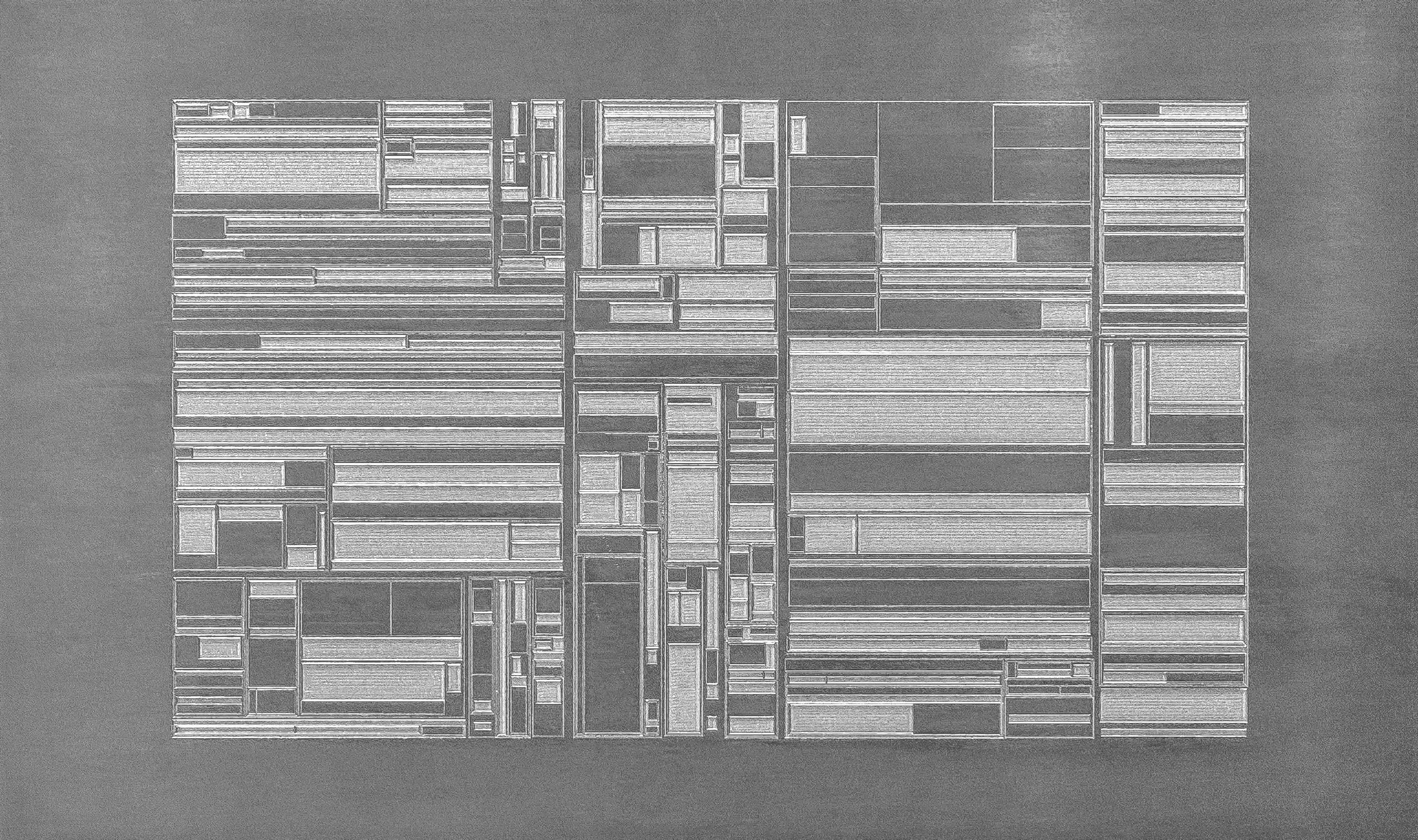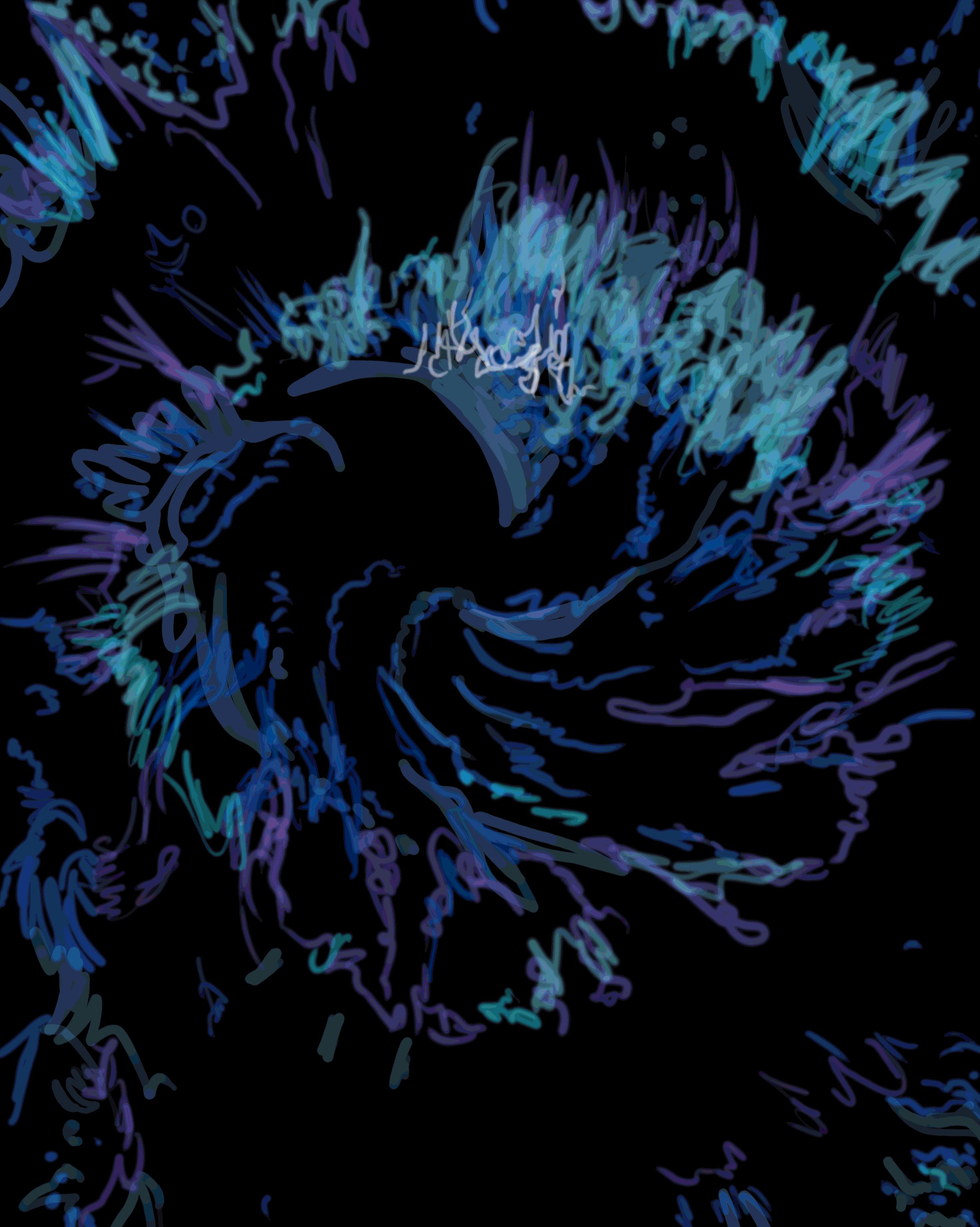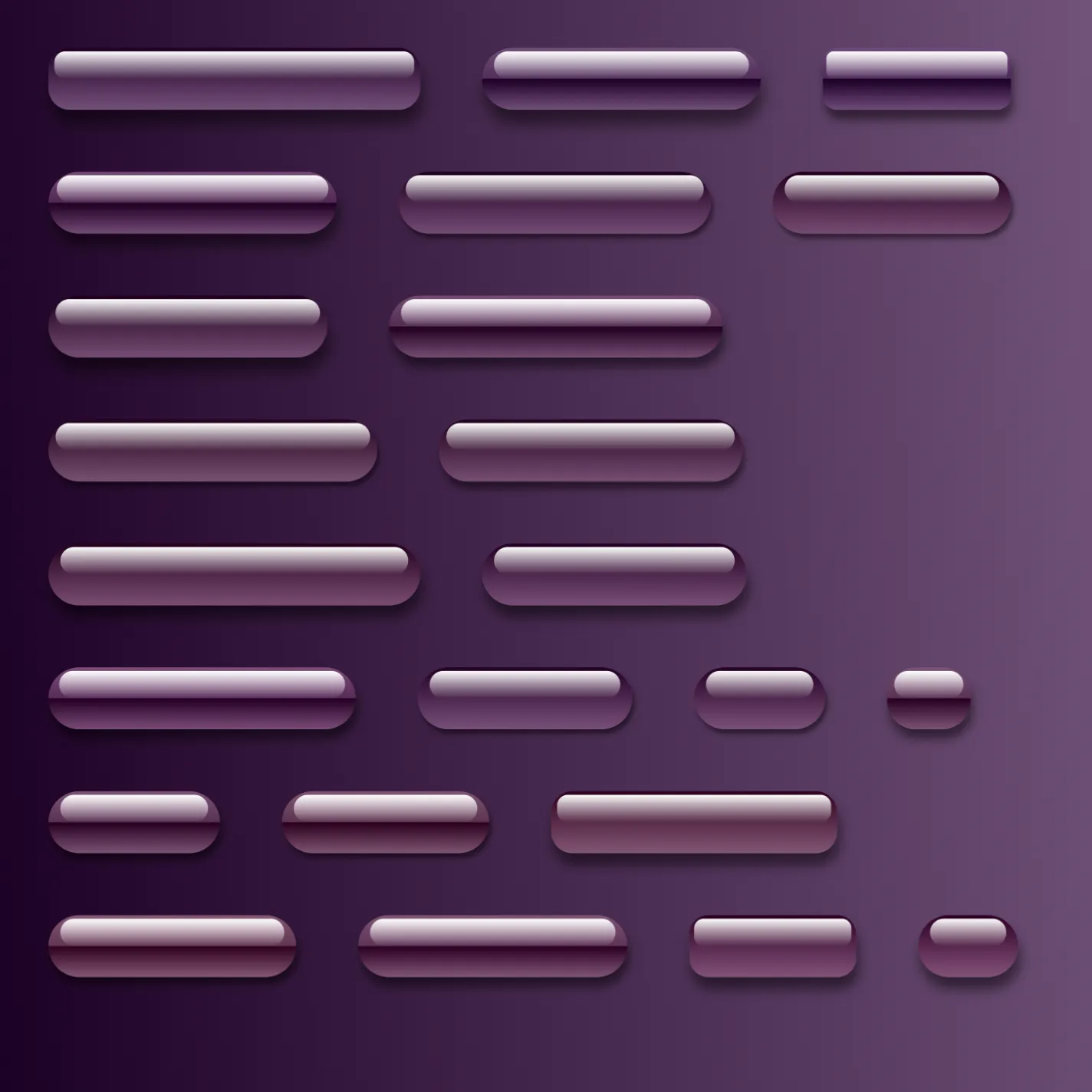Subscribe to get the latest on artists, exhibitions and more.
Gretta Louw in conversation with Jan Robert Leegte and Mimi Nguyen.

Mimi Nguyen: Gretta, you had previously curated ICONICITY at the Paul W. Zuccaire Gallery in New York, an exhibition that explored the religious fervor of technology, showcasing nine international artists, including Jan Robert Leegte here, working in video, software and net art, textile art, drawing and digital prints. Could you elaborate on how you see the intersection of historical symbolism and contemporary digital communication in the context of this exhibition?
Gretta Louw: For a long time I’d been interested in the visual language of the digital - how the graphic design of the internet and advancing technologies inherently carry the socio-political agenda of their makers. Think about cloud icons, for example; through the association with ephemerality, they distract from the very real, very labour- and resource-intensive reality of data servers, undersea cables, and the physical infrastructure of the internet. Graphic design, the creation of clickable, digital ‘icons’ though, is not a recent invention, in many ways it goes all the way back to religious painting of the Middle Ages. Speaking from a Western, art historical perspective, the Church used its relationship with artists to propagate its socio-political agenda through graphic representations. I became very interested in the parallels and comparisons between visual representations and iconographies over time, how public discourse or opinion can be shaped by them, and what they tell us about power hierarchies.
Jan Robert Leegte’s work - the button drawings and his software piece ‘Ornament’, which we included in the show - is a perfect example. The works are so simple - showing how little, visually speaking, is needed to convey a powerful message.
Mimi Nguyen: Jan, your work has evolved from pioneering internet art in the 1990s to incorporating digital materials into physical gallery spaces. In the context of your long-standing engagement with the internet as an artistic medium, how do you perceive the evolving role of the internet and digital technologies in the art world and society as a whole?
Jan Robert Leegte: Massive question! Let me try and give a personal view on this. In my last show I revisited McLuhan’s famous sentence, ‘The Medium is the Message’, which is such a timeless wise insight. With the networked computer we have unleashed an entity with unprecedented force which is changing everything for the unknown. Its unfolding properties are what define the outcome. You see the effect that social media and what AI are having on society and on the whole planet. My work is deliberately trying to be observant of the phenomena of software to try and understand them before I get swept away by the information storm. I do this for myself but hopefully in my work also for others. I see Gretta’s work also offering this beacon.
Mimi Nguyen: Gretta, your upcoming exhibition with Verse, Hyperconnection, takes a deep dive into digitality and technology's impact on our identity and culture. How does the physical transformation of the SODA building facade in Manchester relate to the overarching theme of digital immersion, and what can visitors expect to experience in this unique environment?
Gretta Louw: What I found most appealing about the opportunity to display a work at that scale on the SODA facades, is that it feels like a rare instance where the real impact and pervasiveness of the digital in everyday life becomes tangible. Digital technologies, from ads tracking and cookies to surveillance and AI-governance, are being used increasingly in almost every facet of life - but it’s often not visible to consumers. People use their phones a lot and are no longer as naïve as they were in the pre-Snowden, pre-Cambridge Analytica era, but nevertheless most people are not aware of the full extent of AI and digital encroachment in their lives. Having an exhibition of digital artworks on the scale of a city skyline is a timely reminder of just how hybrid the contemporary experience has become.

Mimi Nguyen: Hyperconnection is not your first project where you’re taking over the public space. Your previous series The Commons, originally commissioned by the Culture Department of the City of Munich, comprised a custom campaign for billboards and outdoor advertising spaces in downtown Munich in summer 2020 and later in Los Angeles in 2022. Could you share the inspiration behind this project and how it aims to encourage reflection on the nature of these spaces, especially in the context of the digital age where advertising and public interaction intersect?
Gretta Louw: Yes, this was an amazing opportunity and I learned so much working on The Commons. Initially it was conceived as an ‘anti-advertising advertising campaign’ using commercial outdoor advertising spaces to critically question the insertion of marketing messages into public space. Then as I began working on the project, the pandemic hit, and suddenly public spaces were transformed in ways that we could not have predicted only a few weeks before. It made me reflect on the inherent value of public spaces, especially outdoor and green spaces, how they contribute to physical, bodily health when properly planned and utilised, but also the essential role they play in the health of a community, a society.
The campaign became a very minimalist, poetic, sometimes playful invitation, in the form of brief texts on monochromatic backgrounds, for people to re-imagine the spaces they move through and to ask themselves how they could be transformed in pro-social ways.
There was also an accompanying digital side of the project, in the form of targeted ads on Instagram, which then explained in the comments exactly how the viewer was being targeted (i.e. telling them which keywords had been used by the algorithm to identify them as a target for this ‘ad’). That was also very interesting. The reaction to both to billboards in public space and the targeted ads was much stronger than I would have anticipated, which was fantastic. Societies, communities need spaces and forums in which they can exchange views and engage with one another.

Jan Robert Leegte: Im surprised at the mainly political stance of your writings. When I look at your work I am always captivated by an extra-political reality that offers solace in all its weirdness and explicit beauty. Could you tell me more about that side of the work?
Gretta Louw: When I speak about my work, inevitably the ideas and concepts that are foregrounded are the most accessible to talk about; subjects that have their own language or existing discourse. But art offers another kind of language. This is why, although I do write regularly, writing is not enough for me on its own; I have learned, through my work, to think with my hands (as an octopus thinks with its tentacles), to open other portals that are locked to intellect.
There is, exactly as you say, a weirdness, a connection to the sublime, to the inexplicable, that I have to express visually because I don’t have the words or concepts for it verbally. I think this is the side of myself and my work that is inspired by nature and the metaphysical. There are so many things that concern me about how society is right now, that I think about daily, but always in amongst and alongside all of that, there is a deep appreciation for and delight in tiny details and epic patterns that I have grown increasingly attuned to as my practice has matured.
Mimi Nguyen: Your recent work, Portal2 is a video installation designed for the big LED facade in Manchester encompassing NFT works. The piece comprises a frame-by-frame digital hand drawing based on an AI-generated image, thus fully integrating digital and analogue elements and highlighting the absurdity of the notion of a digital/physical dichotomy in this post-internet age. In your view, how does this fusion of old and new technologies reflect broader societal and cultural dynamics? What does it reveal about our relationship with technology?
Gretta Louw: The crux of it is, I think, that the idea of a digital/analogue divide has failed. Or perhaps it was always designed to be more of a distraction, a way to curtail and limit public discourse. Tech narratives around novelty and innovation that do not take into account the existing technologies that they were inevitably built upon are misleading. All technologies are preceded by other technologies, be they digital technologies, thought technologies (like storytelling), or cultural technologies. I’m always interested in highlighting how new and old, futuristic and ancient, innovative and continuous technologies are always merged and merging. And whether someone agrees with that or not, I think it’s beyond question at this point that 21st Century life is intrinsically hybrid. I want to make art that reflects the times I live in.
The motif of portals arose for me in the last year, and I’ve been very influenced by the work of Dani Admiss in terms of putting words and a conceptual framework to the aesthetic side of things that I’ve been exploring. Portals are antithetical to any notions of a chronological, objective idea of ‘progress’ along specific dimensions. Rather, they are interfaces between the past/present and various, branching futures; they are intersections that shunt us from one pathway to another, disrupting our sense of continuous, chronological momentum.
Using a portal, or even recognising one, requires us to let go of the dominant thought technologies from the 20th century, specific ideas of linear logic and categorisable hierarchies of knowledge. Portals require us to relearn thinking in a way that is both futuristic (quantum) and ancient (cosmological). On another plane, portals can show us the through-lines between vast, complex, seemingly disparate systems; the entanglements between nature, culture, and technology. This is a form of tentacular thinking, both in the way that it expands, connects, and grasps, but also in the sense that it embodies thinking in a multifaceted/multi-limbed manner; a gestalt; something more than the tyranny of centralised (Cartesian) intelligence.
Gretta Louw
Gretta Louw is a South African-born Australian artist, writer, and curator. Her practice investigates the tensions between sensuality and efficiency; craft and automation; constant digital connectedness and corporeal dislocation: in short, the technosphere and the biosphere. Louw graduated from the University of Western Australia in 2002, subsequently living in Japan and New Zealand, before moving...
Jan Robert Leegte
Jan Robert Leegte was one of the first Dutch artists to work on and for the Internet in the 1990s. In 2002, he shifted his main focus to implementing digital materials in the context of the physical gallery space, aiming to bridge the online art world with the gallery art world, making prints, sculpture, installations, drawings, and projections, connecting to historical movements like land art...
Mimi Nguyen
Mimi is a Creative Director at verse. She is a assistant professor at Central Saint Martins, University of Arts London where she leads the CSM NFT Lab. Her background is New Media Art, having previously studied at the Berlin University of the Arts (UdK) and Academy of Fine Arts in Warsaw. She now also teaches at Imperial College London, Faculty of Engineering, where she leads Mana Lab - a “Future...
